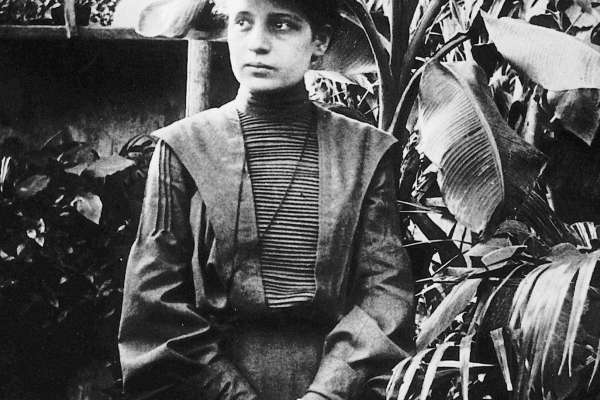Lise Meitner was famous for discovering the mechanism of nuclear fission together with her nephew Otto Robert Frisch. Lise had to escape Germany and Austria before WW II since she was Jewish.
This article is a second installment of our monthly cycle: “Women in Nuclear”, originally published in November 2022.
1) Born in 1878 in Vienna, Elise (she later shortened her name to Lise) was the third of eight children born to a Jewish lawyer, Philipp Meitner, and his wife Hedwig.
2) Although she was attracted to math and science, she trained as a French teacher since women could not enter Vienna university until 1897. She took private lessons with other young women, among them was Henriette Boltzmann (Ludwig Boltzmann’s daughter).
3) Meitner entered the University of Vienna in October 1901; her thesis: “Examination of Maxwell’s Formula” was approved in 1905. She became one of the first women to earn a doctoral degree in physics, with the PhD thesis “Thermal Conduction in Inhomogeneous Bodies” in 1906.
4) While active in optics research, Meitner was introduced to radioactivity. She went to Friedrich Wilhelm University, Berlin and started working (for free) with Otto Hahn in the basement of the laboratory to measure alpha, beta and gamma rays. Since women were not admitted to the universities in Prussia in that time Lise could not enter the rest of the laboratory.
5) Lise and Otto Hahn co-authored three papers in 1908, and six more in 1909. She also, together with Hahn, discovered and developed a physical separation method known as radioactive recoil.
6) In 1912, Hahn and Meitner moved to the newly founded Kaiser Wilhelm Institute. Planck appointed her his assistant at the Institute for Theoretical Physics. As such, she marked his students’ papers and was paid for this work. Assistant was the lowest rank on the academic ladder, and Meitner was the first female scientific assistant in Prussia.
7) Meitner was able to isolate from pitchblende mother isotope and its actinium daughter product, which was a new product “”protoactinium”. She named and explained the properties of protactinium. Although this element was already discovered before (by Fajans and Goering), their properties were not understood until Meitner explained it. Therefore Fajans agreed on the name given by Meitner.
8)Women were granted the right of habilitation in Prussia in 1920; thus in 1922 Meitner was granted her habilitation and became a Privatdozentin. She was the first woman to receive her habilitation in physics in Prussia, and only the second in Germany.
9) In mid-1938, Meitner with Otto Hahn and Fritz Strassmann at the Kaiser Wilhelm Institute found that bombarding thorium with neutrons produced different isotopes. Hahn and Strassmann later showed that isotopes of barium could be formed by bombardment of uranium. Barium was much lighter than uranium so its production could not be explained just by simple alpha, beta and gamma decay process. In late December, Meitner and Frisch worked out the phenomenon of such a splitting process in Sweden, since they had to leave Germany due to anti-Jewish laws. In their report in the February issue of Nature in 1939, they gave it the name “fission”. This principle led to the development of the first atomic bomb during World War II, and subsequently other nuclear weapons and nuclear reactors.
10) Meitner did not share the 1944 Nobel Prize in Chemistry for nuclear fission, which was awarded exclusively to her long-time collaborator Otto Hahn. Several scientists and journalists have called her exclusion “unjust”. According to the Nobel Prize archive, she was nominated 19 times for the Nobel Prize in Chemistry between 1924 and 1948, and 29 times for the Nobel Prize in Physics between 1937 and 1965.
11) She declined an offer to join Frisch on the British mission to the Manhattan Project at the Los Alamos Laboratory, declaring “I will have nothing to do with a bomb”.
12) Chemical element “Meitnerium” was named after her in 1997.
